#Anthony van Dyck
Explore tagged Tumblr posts
Text

Anthony van Dyck
#van dyck#anthony van dyck#art#artwork#fine art#fineart#painting#art history#history of art#women in art
20 notes
·
View notes
Text
Writing Reference: Grief

“Grief is the emotional reaction to a loss, in this case, to death” (Samuel, 2019, p. xvii), and mourning is the process of adjustment to a world without that person.
The following physical sensations and perceptual experiences often accompany the grieving process (modified from Worden, 2009):
Hollowness in the stomach
Tightness in the throat and chest
Being oversensitive to noise
Feelings of unreality
Shortness of breath
Muscle weakness and lack of energy
Dry mouth
Strong emotions typically occur during grief, including (from Worden, 2009):
Sadness. Failure to acknowledge and embrace sadness can cause more complicated and prolonged grief.
Anger. A common reaction to loss that leads to many issues during the grieving process.
Guilt and self-reproach. Often regarding something that happened or was neglected at the time of death.
Anxiety. Ranging from feelings of insecurity to panic attacks, sometimes associated with fears of being unable to take care of yourself in the absence of the other person.
Loneliness. The loss of a day-to-day relationship can leave someone feeling all alone. Social support can help but does not remove the sense of a broken attachment.
Fatigue. Feelings of apathy and listlessness are not uncommon following the death of a loved one and may limit behavior and activity.
Helplessness. Survivors can be left feeling vulnerable and helpless, especially when they have young children to look after.
Shock. Sudden death, by its very nature, can cause the survivor to experience shock.
Yearning. Yearning or pining for the loved one is a typical reaction to death, and as it reduces, may indicate the mourning process is coming to an end.
Emancipation and relief. It is not uncommon for a survivor to experience a sense of relief, especially where the deceased was oppressive or was suffering a prolonged illness. While a normal response, it may be accompanied by feelings of guilt.
Numbness. While the previous feelings are common, so too is an absence of emotions, at least initially. With so many feelings to experience and manage, the early stages of grief may be overwhelming and result in a protective numbness.
It is important to note that each person’s experience of grief is different, and while the emotions above are typical of loss, they are not exhaustive.
Types of grief can take various forms, including (Elizz by SE Health, 2019; CaringInfo, n.d.; WebMD, n.d.):
Abbreviated grief. A short-lived response to a death, possibly following the experience of prolonged anticipatory grief or something immediately filling the space left by the loss.
Absent grief. The bereaved may not acknowledge or may remain in denial of what has happened. If prolonged, the lack of response can be concerning and require specialist support.
Anticipatory grief. For a caregiver, grief can begin before the person being cared for dies. It may be associated with a sense of losing what they expected life to be like. Such feelings can start with a terminal diagnosis or a worsening state of health.
Chronic grief. A sub-type of complicated grief (see below), left untreated, chronic grief can involve extreme feelings of hopelessness, a sense of disbelief, and a loss of meaning, leading to severe clinical depression or thoughts of self-harm and even suicide.
Collective grief. A shared experience of grief that affects a family, group, or community, often preceded by an event (natural disaster or attack).
Complicated grief. Where grief seems to deviate from what’s expected, complicated grief interferes with the ability to function. Complicated grief may include chronic (see above), delayed, or absent grief (American Psychological Association, n.d.).
Cumulative grief. Multiple deaths over a period of time can leave the bereaved without the opportunity or capacity to process each loss.
Delayed grief. Grief may not occur immediately after losing a loved one but may be postponed until another significant event occurs, resulting in what may seem an excessive response to the present situation.
Distorted grief. An extreme form of complicated grief exhibited as self-destructive behavior, anger, guilt, or hostility toward others.
Disenfranchised grief. When others do not recognize the importance of the loss, such as the death of an ex-partner, pet, or colleague. Society may consider the loss as minor or not legitimate.
Inhibited grief. Grief may not always be outwardly visible; it may result from a conscious effort to maintain privacy or keep emotions hidden from close friends or family.
Masked grief. Atypical physical symptoms and behaviors can be a response to grief without being attributed to the loss.
Normal grief. While there may not be a ‘typical’ grief shared by everyone, normal grief is considered to be when emotional intensity surrounding the death gradually decreases or basic daily activities begin to return to normal.
“We need to learn to support a healthy grieving, and to help people to understand that each person goes at their own pace” (Samuel, 2019, p. XX).
The treatment given to those attempting to process grief must be specific to the individual and their experience. The following approaches overlap and complement one another in supporting the bereaved (modified from Worden, 2009).
Helping the survivor actualize loss
When and where did the death occur?
What happened?
How were you told and where were you?
Visiting the grave can also make the loss more concrete.
Helping the survivor identify and experience feelings
Many feelings may not be recognized or felt to their full degree during intense grief. It is essential to help survivors experience the following:
Anger – arising from feelings of frustration and helplessness.
Guilt – for what the bereaved did and did not do to affect the outcome (usually irrational).
Anxiety and helplessness – feelings of helplessness can leave the bereaved unsure if they can survive alone and concerned about their own mortality.
Sadness – it can be challenging for many to show their upset in front of others. Crying can be helpful if associated with an awareness of what was lost.
Assisting living without the deceased
What problems are you facing, and how can they be resolved?
It is important to neither rush the bereaved to make decisions nor encourage a sense of helplessness, but instead communicate that they will be able to make decisions when they are ready.
Helping find meaning in the loss
Why did this happen?
Why did this happen to me?
How has this loss changed me?
Allowing for individual differences
No two people grieve in the same way; the process and feelings associated with loss are unique. There is tremendous variability in the following:
Intensity of affective reactions
Degree of impairment
Length of time it is experienced
Source ⚜ Bereavement ⚜ Notes & References ⚜ Writing Resources PDFs
#grief#writeblr#writing reference#psychology#character development#dark academia#poets on tumblr#writers on tumblr#characterization#spilled ink#writing prompt#words#literature#poetry#langblr#writing inspiration#creative writing#fiction#writing ideas#anthony van dyck#writing resources
491 notes
·
View notes
Text

Studies of a Man's Head (1618) by Anthony van Dyck
382 notes
·
View notes
Text

Anthony van Dyck (Flemish, 1599-1641) Crucifixion, ca.1621-32 Museo e Real Bosco di Capodimonte, Napoli “For God so loved the world, that he gave his only begotten Son, that whosoever believeth in him should not perish, but have everlasting life” (John 3:16). - The Bible.
#Anthony van Dyck#Crucifixion#1600s#art#fine art#european art#classical art#europe#european#fine arts#oil painting#europa#mediterranean#christian art#christian#christianity#christentum#catholic#catholicism#crucifix#Jesus Christ#Jesus#Christ#God the Son#Son of God
111 notes
·
View notes
Text

Portrait of a Man in Armour with a Red Scarf (between 1625 and 1627), by Anthony van Dyck
62 notes
·
View notes
Text
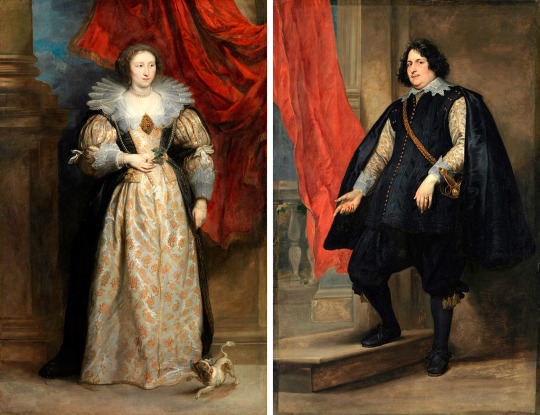
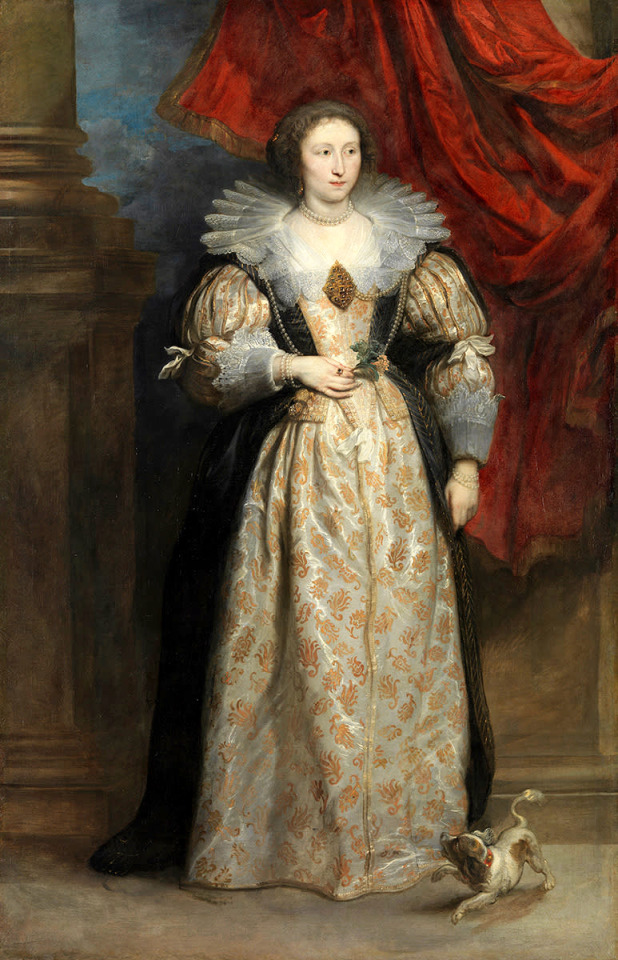

ab. 1630 Anthony van Dyck - Filips Godines and Sebilla vanden Berghe
(Alte Pinakothek)
199 notes
·
View notes
Text

Golgotha, Anthony van Dyck, 1630
#Good Friday#Holy Week#Crucifixion#liturgical year#liturgical calendar#art#art history#Van Dyck#Anthony van Dyck#religious art#Biblical art#Christian art#Christianity#Catholicism#New Testament#Gospels#Baroque#Baroque art#Flemish Baroque#Flemish art#17th century art#oil on canvas#St. Michael's Church Ghent
230 notes
·
View notes
Text

Anthony van Dyck (1599-1641)
Portrait of the Sculptor François Duquesnoy (1597-1643), circa 1627-32
#Anthony van Dyck#painter#artwork#painting#17th century#history of art#portrait#François Duquesnoy#baroque
100 notes
·
View notes
Text
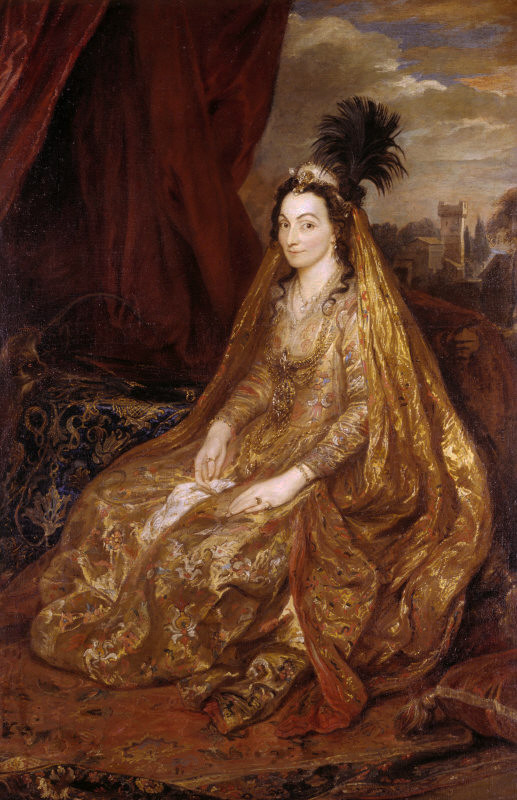
Teresa, or Teresia Sampsonia, Lady Shirley (1589–1668)
Artist: Sir Anthony Van Dyck (Flemish, 1599-1641)
Date: 1622
Medium: Oil on canvas
Collection: National Trust Collections, United Kingdom
Description
Teresa Sampsonia (born Sampsonia; after marriage Lady Shirley, 1589–1668) was an Iranian-English noblewoman of the Safavid Empire of Iran. She was the wife of Elizabethan English adventurer Robert Shirley, whom she accompanied on his travels and embassies across Europe in the name of the Safavid King (Shah) Abbas the Great.
Teresa was received by many of the royal houses of Europe, such as English prince Henry Frederick and Queen Anne (her child's godparents) and contemporary writers and artists such as Thomas Herbert and Anthony van Dyck. Herbert considered Robert Shirley "the greatest Traveller of his time", but admired the "undaunted Lady Teresa" even more. Following the death of her husband from dysentery in 1628, and due to impediments from grandees at the court, and the authorities, during the reign of Abbas's successor and grandson Safi (r. 1629–1642), Teresa decided to leave Iran. She lived in a convent in Rome for the rest of her life, devoting her time to charity and religion. As a pious Christian, and because of her love for her husband, Teresa had Shirley's remains transported to Rome from Isfahan and reburied; on the headstone of their mutual grave she mentions their travels and refers to her noble Circassian origins.
Thanks to her exploits, Teresa has been described as someone who subverted patriarchal gender roles common to the Muslim and Christian cultures of her time. Due to their hybrid identities and adventures, Teresa and her husband became the subject of several contemporary literary and visual works. Nevertheless, the story of Teresa as an important woman of the 17th century has been largely overshadowed and obscured by the tale of her husband Robert and his brothers.
Together they made two extended voyages across Europe. In 1611 they travelled to England where Teresa gave birth to their son, Henry. In 1613 they returned to Isfahan on an East India Company ship. The Shirleys continued to travel over the next decade to India, Portugal, Spain and Italy. They went to Rome in 1622, and this picture and the pendant portrait of Robert can be dated to Van Dyck's first visit to the city.
Van Dyck’s training with Rubens had sharpened his eye for the enriching effect offered by sumptuous garments such as those worn by Lady Shirley. Van Dyck had also recently begun to absorb the lessons of Titian and the other great Venetian colourists.
Teresa was a gifted linguist and spoke more than half a dozen languages. Historian Bernadette Andrea recounts how she saved her husband’s life on at least two occasions: ‘once as they set off on their first journey when his Persian enemies sought to kill him, which earned her the accolade "a true Amazon" and again when the couple encountered hostile Portuguese traders on their way to Goa.’ (See the entry for 'Lady Teresa Sampsonia Sherley' in the Oxford Dictionary of National Biography).
After Robert’s death, Teresa was accused of the capital crime of apostasy and her property was confiscated. She became a fugitive, hiding in an Augustinian church in Isfahan and an Armenian convent just outside the Safavid capital. She received a special permit to travel, went to Istanbul for three years and then on to Rome where she settled and remained for more than three decades until her death in 1668.
#portrait#teresa sampsonia#safavid empire of iran#golden dress#persian rug#seated#veil#jewels#iranian noblewoman#oil on canvas#artwork#fine art#oil painting#iranian history#anthony van dyck#flemish painter#national trust collections#flemish art#17th century painting#european art
29 notes
·
View notes
Text

Anthony van Dyck
369 notes
·
View notes
Text



Magdalene of Bavaria Countess Palatine of Neuburg, school of Anthony van Dyck; early 17th century
#bavaria#17th century#holy roman empire#17th c. holy roman empire#17th c. germany#germany#mdp17th c.#early 17th century#anthony van dyck
22 notes
·
View notes
Text

Crucifixion (1622) by Anthony van Dyck
214 notes
·
View notes
Text



















Historical Portraits of Children // The Truth is a Cave – The Oh Hellos
Four Children Making Music – attributed to the master of the Countess of Warwick, 1565 // Three Children with a Dog or Two Sisters and a Brother of the Artist – Sofonisba Anguissola, 1570-1590 // The Children of Philip III of Spain (Ferdinand, Alfonso, and Margarita) – Bartolomé González y Serrano, 1612 // Three Children with a Goat-Cart – Frans Hals, 1620 // The Balbi Children – Anthony van Dyck, 1625-1627 // The Three Eldest Children of Charles I – Anthony van Dyck, 1635-1636 // Five Eldest Children of Charles I – Anthony van Dyck, 1637 // Portrait of the Children of Habert de Montmor – Philippe de Champaigne, 1649 // Group Portrait of Charlotte Eleonora zu Dohna, Amalia Louisa zu Dohna, and Friedrich Christoph zu Dohna-Carwinden – Pieter Nason, 1667 // The Graham Children – William Hogarth, 1742 // Portrait of Sir Edward Walpole’s Children – Stephen Slaughter, 1747 // The Bateson Children – Strickland Lowry, 1762 // The Gower Family: The Five Youngest Children of the 2nd Earl Gower – George Romney, 1776-1777 // Marie-Antoinette de Lorraine-Habsbourg, Queen of France, and Her Children – Élisabeth Louise Vigée Le Brun, 1787 // The Marsham Children – Thomas Gainsborough, 1787 // The Oddie Children – William Beechey, 1789 // Three Siblings – Johann Nepomuk Mayer, 1846 // Happy Children – Paul Barthel, 1898 // My Children – Joaquín Sorolla, 1904 // The Truth is a Cave – The Oh Hellos
#this line makes me feel Very Normal and not at all Deranged 🥴😵💫#portraiture#family portrait#portrait#portrait painting#sofonisba anguissola#frans hals#anthony van dyck#philippe de champaigne#william hogarth#george romney#elisabeth vigee le brun#elisabeth louise vigee le brun#thomas gainsborough#joaquin sorolla#the truth is a cave#the truth is a cave song#the truth is a cave the oh hellos#through the deep dark valley#through the deep dark valley album#through the deep dark valley the oh hellos#the oh hellos#art history#art#lyrics#lyric art#long post
101 notes
·
View notes
Text

Christ of the Coin
Artist: Anthony van Dyck (Flemish, 1599–1641)
Date: circa 1625
Medium: Oil on Canvas
Collection: Musei di Strada Nuova, Genoa, Italy
Description
The canvas, referring to the period of the painter's stay in Genoa, can be dated to around 1625 and reveals a deep influence of Venetian painting and, in particular, of Titian both as regards the pictorial technique and chroma both as regards the formal structure. The work is in fact a reinterpretation by Van Dyck of a composition of similar subject painted by the painter Cadore for Philip II of Spain, now preserved at the National Gallery in London and, probably known to the Flemish through an engraving by Martino Rota. The latter fact explains why the representation of Titian is here taken in counterpart, on the basis of the inverted engraving image.
The narrated episode, drawn from the synoptic gospels, refers to the artificial controversy which the Pharisees and Herodians attempt to involve Jesus in taking a position on the controversial controversy over taxes and, more generally, on the question of recognition of the political authority of Rome . The Pharisees, bitter enemies of the Roman power in Palestine, ask Christ whether it is lawful to pay tribute to Caesar or not, he responds to show him a coin and asks who the image and the inscription that is above; ;the "adversaries" reply that image and inscription are of Caesar, the image was in fact that of the emperor Tiberius.
Jesus, pointing to the effigy on the coin, says "Render to Caesar what is Caesar's and to God what is God's", thus implicitly inviting the Pharisees to distinguish between civil authority and religion.
#painting#oil on canvas#biblical story#jesus#pharisees#new testament#christianity#christian faith#christian art#anthony van dyck#flemish painter#european art#17th century painting#gospel of matthew
28 notes
·
View notes
Text

1629 Anthony van Dyck - Portrait of a man of quality and his son
(Louvre Museum)
263 notes
·
View notes
Photo

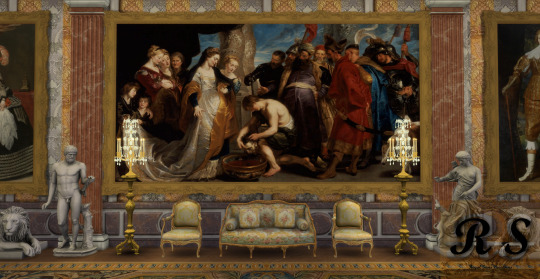
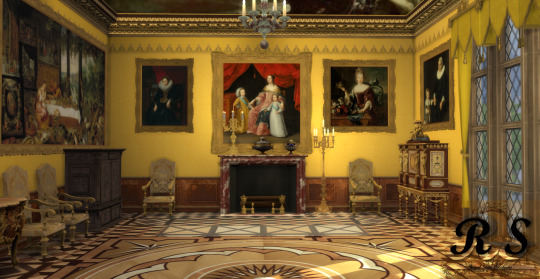

My “Old Century Manor Painting Set for TS4″ has been released, Download @ Regal Sims
#Regal Sims#The Regal Sim#the sims 4#the sims 4 cc#the sims 4 creations#the sims 4 custom content#TS4#ts4cc#ts4 custom content#ts4 historical#ts4 baroque#ts4 rococo#ts4 regency#ts4 royalty#ts4 royal family#ts4 paintings#painting#Baroque Art#baroque architecture#anthony van dyck#peter paul rubens#ts4 decor#ts4 furniture#ts4 buy#ts4 build#ts4 architecture#ts4 palace#ts4 castle#castle#Palace
397 notes
·
View notes